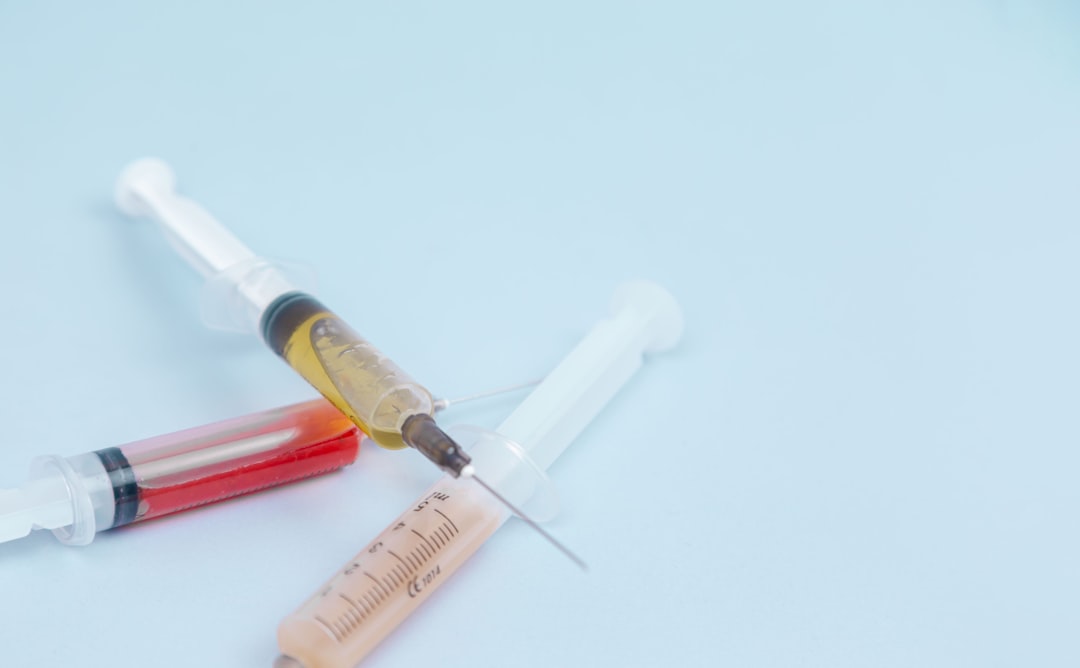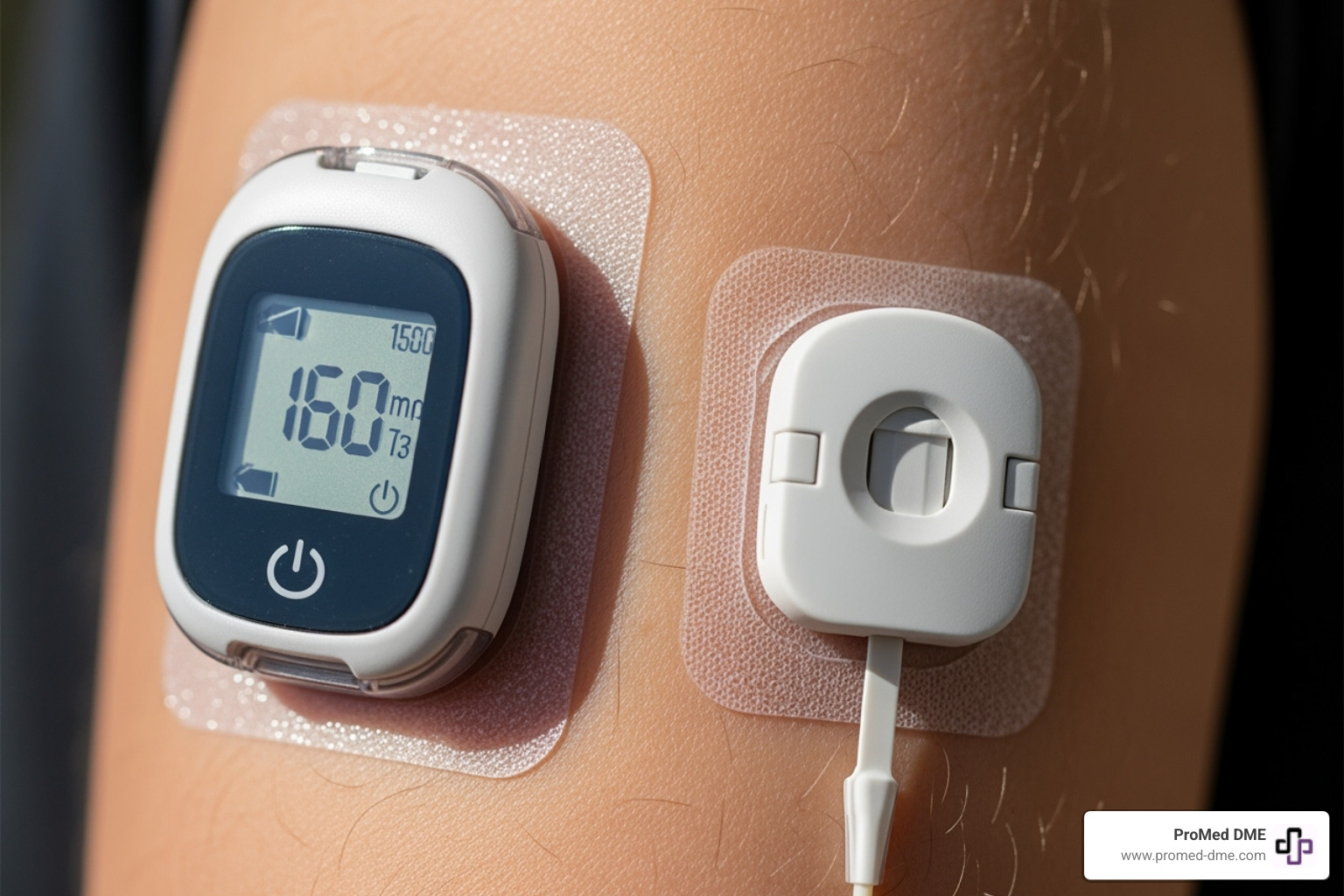Insurance Insights: Are Continuous Glucose Monitors Covered?

Are continuous glucose monitors covered by insurance?
For individuals managing diabetes, this question is often top of mind. The good news is that many insurance plans, including Medicare, do offer coverage for continuous glucose monitors (CGMs), although the extent of coverage can vary. Generally, CGMs are covered for people with type 1 and type 2 diabetes, who have a prescription and meet specific criteria.
Key coverage points:
- Medicare: Covers CGMs for those using insulin, with specific requirements.
- Private Insurance: Most offer coverage, though copays and deductibles can differ.
- Out-of-Pocket Costs: Vary significantly, with options for those without coverage.
Continuous glucose monitors have revolutionized diabetes care, drastically reducing the need for frequent finger stick tests. By providing real-time data, CGMs empower individuals to track glucose levels accurately and make informed lifestyle and treatment decisions. The benefits of using a CGM include better glucose control, reduced hypoglycemic events, and overall improved health outcomes. But with these advantages comes the challenge of navigating insurance coverage, a task that ProMed DME aims to simplify.

Understanding Continuous Glucose Monitors
What is a CGM?
A Continuous Glucose Monitor (CGM) is a small wearable device that provides real-time updates on blood glucose levels. For people managing diabetes, this technology offers a significant improvement over traditional finger stick tests. Instead of sporadic snapshots, CGMs give a continuous picture of how glucose levels fluctuate throughout the day and night.
Components of a CGM:
- Sensor: This part is placed under the skin to measure glucose levels in the interstitial fluid.
- Transmitter: It sends glucose data from the sensor to a receiver or a smartphone app.
- Receiver or App: Displays the glucose levels, trends, and alerts.
These devices are vital for managing diabetes as they allow users to detect patterns and trends in their glucose levels. This data helps in making informed decisions about diet, exercise, and medication.
How Do CGMs Work?
CGMs operate through a simple yet effective mechanism. Here's a quick breakdown:
Sensing: The sensor constantly measures glucose levels in the fluid between cells, providing a reading every few minutes.
Transmitting: The transmitter wirelessly sends these readings to a receiver or a compatible smartphone app.
Displaying: The app or receiver displays current glucose levels and trends over time. Users can set alerts for high or low glucose levels, helping them respond quickly to potential issues.
The real-time monitoring CGMs offer is a game-changer in diabetes management. It helps users understand how different foods, activities, and medications affect their glucose levels. This insight can lead to better glycemic control and reduced risk of complications.
By understanding how CGMs work, users can leverage this technology to improve their diabetes management and overall health outcomes.
Are Continuous Glucose Monitors Covered by Insurance?
Coverage for People with Diabetes
For individuals with diabetes, insurance coverage for Continuous Glucose Monitors (CGMs) is a crucial factor in managing costs. Most insurance plans, including Medicare and commercial insurers, provide some level of coverage for CGMs, recognizing their importance in diabetes management.
People with Type 1 diabetes often have more consistent coverage for CGMs due to the necessity of frequent glucose monitoring. However, those with Type 2 diabetes might also qualify, especially if they use insulin or experience problematic hypoglycemia.
Medicare and CGM Coverage
Medicare generally covers CGMs under Part B as durable medical equipment. To qualify, patients must meet specific criteria:
- Diabetes Diagnosis: Patients must have a diagnosis of either type 1 or type 2 diabetes.
- Insulin Use: They must use insulin or have a history of problematic hypoglycemia.
- Prescription and Training: A doctor's prescription is required, along with proof of CGM usage training.
- Routine Healthcare Visits: Regular in-person or telehealth visits with a healthcare provider are necessary to maintain coverage.

Private Insurance and CGM Coverage
With commercial insurance, coverage for CGMs can vary significantly. Many private insurers cover CGMs for individuals with diabetes, but the extent of coverage depends on the specific insurance plan and provider. Factors that can influence coverage include:
- Type of Diabetes: Coverage might differ between type 1 and type 2 diabetes.
- Insurance Plan: Some plans may cover CGMs fully, while others might require copayments or have certain restrictions.
- State Regulations: Insurance coverage can also vary by state due to different healthcare regulations.
It's essential for individuals to verify their specific policy details with their insurance provider to understand what is covered, any potential out-of-pocket costs, and any necessary documentation or requirements for approval.
In summary, while CGMs are widely covered by both Medicare and private insurance, the specifics can vary. Understanding these details helps in navigating the process and ensuring access to this vital diabetes management tool.
Factors Affecting Insurance Coverage
Prescription and Training Requirements
To get insurance coverage for Continuous Glucose Monitors (CGMs), you first need a doctor's prescription. This step is crucial because it confirms the medical necessity of the device. The prescription should include instructions on how often to test your blood glucose.
But having a prescription isn't enough. You or your caregiver must also be trained to use the CGM properly. This training ensures you know how to operate the device and interpret the data it provides. Training might be part of a diabetes education program or arranged through your healthcare provider.
In summary, both a prescription and proof of training are key components in securing insurance coverage for CGMs.
Routine Healthcare Visits
Routine healthcare visits are another important factor in maintaining CGM insurance coverage. These visits can be in-person or through Medicare-approved telehealth consultations.
Regular check-ins with your doctor help ensure that your CGM is being used effectively and that any adjustments to your diabetes management plan can be made promptly. Medicare and many private insurers require these visits as a condition of ongoing coverage.
Telehealth visits have become more common, adding convenience for patients. They allow for easy communication with healthcare providers without needing to travel, making it simpler to meet insurance requirements.
Routine healthcare visits, whether in-person or virtual, play a significant role in maintaining insurance coverage for your CGM.
Cost Considerations for CGMs
Comparing Costs: Different CGM Options
When it comes to monthly costs for Continuous Glucose Monitors (CGMs), there are several popular options available, each with varying costs and insurance coverage.
One of the latest models in the market is known for its real-time glucose monitoring. If you're buying without insurance, expect to pay around $179.99 for a 30-day supply at some retailers. With insurance, costs can drop dramatically. For instance, purchasing through certain pharmacies might reduce the price to roughly $35 per month.
Another option is often considered more budget-friendly. While exact prices can differ, it's typically less expensive than some other offerings. This makes it an attractive choice for many, especially those with insurance plans that cover a significant portion of the cost.
Out-of-Pocket Expenses
Even with insurance, you might encounter out-of-pocket expenses for your CGM. The extent of these expenses largely depends on your specific insurance plan and coverage details.
For some, insurance covers a big chunk of the costs, leaving minimal out-of-pocket expenses. However, for others, especially those with high deductibles or limited coverage, the expenses can add up. Without insurance, the annual cost of a CGM can reach several thousand dollars, especially if frequent sensor replacements are needed.
Insurance impact is crucial here. Many insurance plans, including Medicare Part B, provide coverage for CGMs, but the specifics can vary. It's important to check with your insurer to understand what portion of the CGM costs will be covered and what you'll need to pay yourself.
In summary, while CGMs offer life-changing benefits, their costs can vary significantly based on insurance coverage and other factors. Always consult with your insurance provider to get a clear picture of your potential expenses.
Frequently Asked Questions about CGM Insurance Coverage
Are CGMs Covered for Non-Insulin Users?
Continuous Glucose Monitors (CGMs) are primarily designed for individuals with diabetes who use insulin. However, recent developments have expanded their accessibility. As of March 2024, the FDA approved the first over-the-counter CGM, the Dexcom Stelo Glucose Biosensor System, intended for non-insulin users. This means individuals managing diabetes with diet or oral medications can now access CGMs without a prescription, although insurance coverage for non-insulin users may still be limited.
What Are the Requirements for Medicare Coverage?
To qualify for Medicare coverage of a CGM, there are specific criteria you must meet:
- Diabetes Diagnosis: You need a diagnosis of type 1 or type 2 diabetes.
- Insulin Use: You must use insulin or have a history of severe hypoglycemia.
- Prescription & Training: A doctor’s prescription and evidence of training on CGM usage are necessary.
- FDA Approval: The CGM must be FDA-approved and used according to its indications.
- Healthcare Visits: You must have had an in-person or telehealth visit with your healthcare provider within six months of ordering the CGM.
Medicare requires ongoing engagement with your healthcare provider every six months to maintain coverage, ensuring you adhere to the prescribed CGM regimen.
How Often Do I Need to Visit My Doctor for Coverage?
To maintain insurance coverage for your CGM, regular healthcare visits are essential:
- Initial Visit: You need a visit with your healthcare provider within six months before starting CGM use.
- Routine Follow-ups: After obtaining a CGM, Medicare requires you to have follow-up visits every six months. These can be in-person or via telehealth. These check-ins help verify that you’re using the CGM correctly and adhering to your treatment plan.
Regular visits not only ensure continued insurance coverage but also provide opportunities to optimize your diabetes management strategy with professional guidance.
Conclusion
Navigating continuous glucose monitors and understanding their insurance coverage can be complex. At ProMed DME, we’re committed to making this process as smooth as possible for our customers. Our team is dedicated to ensuring you have access to the best tools for diabetes management, with a focus on minimizing out-of-pocket costs.
ProMed DME: A Partner in Your Health Journey
At ProMed DME, we offer a wide range of durable medical supplies, including top-of-the-line CGM systems. Our commitment to exceptional customer service means that whether you’re just starting with a CGM or looking to switch, we are here to guide you every step of the way.
Our knowledgeable staff, including a dedicated nurse, is always ready to assist you with any questions about CGM insurance coverage. We work closely with most insurance plans to ensure that our customers receive the maximum benefits available to them. This includes helping you understand the requirements for coverage and assisting with any necessary documentation or follow-ups.
Simplifying Insurance Assistance
We understand that dealing with insurance can be daunting. That's why we offer free shipping and personalized support to help you steer the intricacies of insurance coverage. Our team is skilled at working with both Medicare and commercial insurance providers to ensure you have access to the CGM systems you need.
Whether you have questions about coverage for type 1 or type 2 diabetes, or need help understanding the requirements for Medicare or private insurance, ProMed DME is here to help. We are dedicated to helping you maintain your health with the least amount of stress and uncertainty.
For more information on how we can assist you with continuous glucose monitoring, visit our Continuous Glucose Monitoring page. Our goal is to empower you with the tools and knowledge necessary to manage your diabetes effectively and improve your quality of life.
Related Resources & Articles
Stay informed with our informative blog posts.
Discover the ProMed Advantage
& Try Our Products
We offer free shipping and legendary customer service to ensure you receive the
best DME products for your needs.




